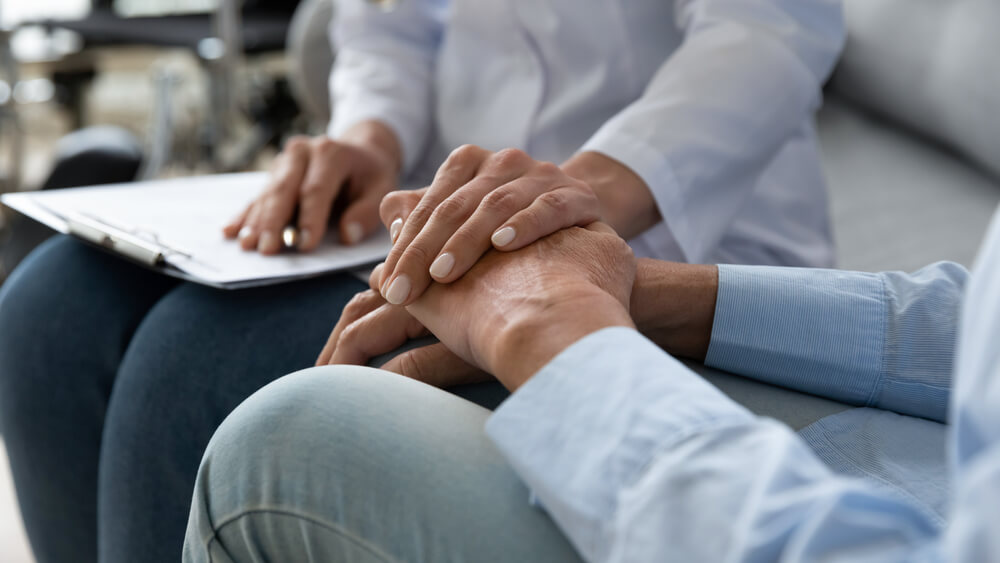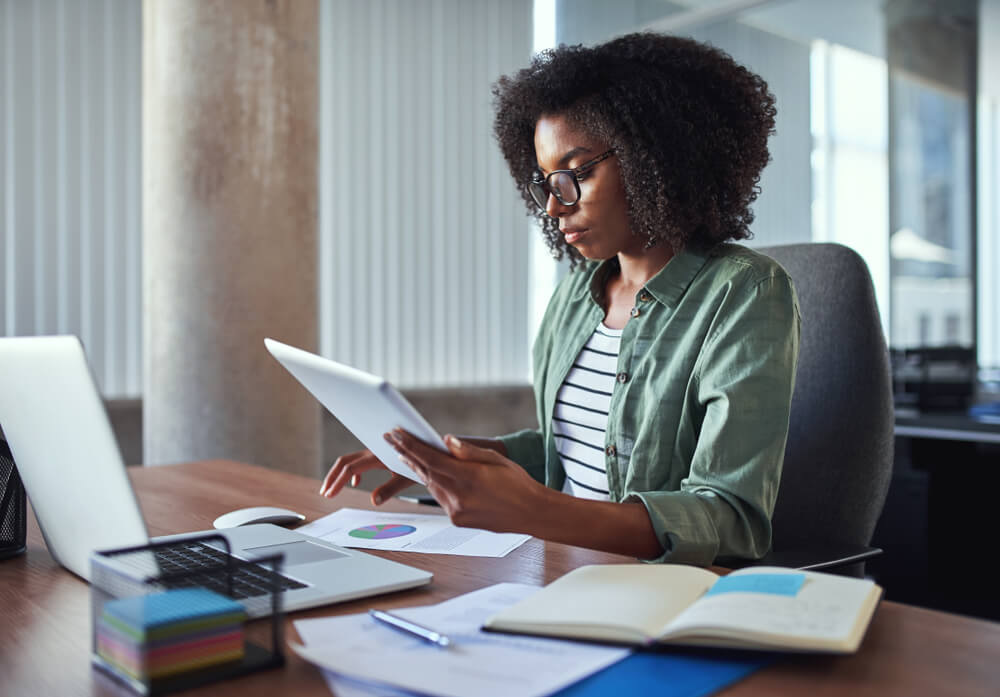Student anxiety is becoming becoming more and more common in today’s educational environment, as they juggle their academic responsibilities, personal lives, and finances. So if anxiety impacts the quality of your student life, know that there are ways to overcome it – no matter how debilitating it feels when it strikes. Even if they sound simple, the anxiety techniques for students provided in this article are proven to reduce stress and anxiety. Whether you are struggling to acclimatise as an international student, worried about academic performance or find yourself occupied with relentless worry about finances, know that there are ways to make positive changes to your outlook and mental health. Keep reading for 6 anxiety techniques for students.
Which strategy works best is different for every student. However, each technique can be easily adopted by students with hectic schedules who struggle with the physical and mental ramifications of anxiety. The adage this too shall pass may sound cliché, but trust in the process, and you will soon see that you can take student life in your stride. If you are unable to manage your anxiety independently, there is no shame in reaching out for professional support.
Exposure Therapy and Acts of Bravery
It is easy to fall into the trap of avoiding what makes us anxious. In the short term, it brings some relief. In the long term, avoidance affirms that the situations that fill us with panic and dread should be avoided. Feelings of anxiety surge when our hard-wired fight, flight or freeze psychological response is activated. This psychological response served us well when we had to deal with predators in the jungle, not so much when the stressors that trigger it are stressful factors in our modern world, such as getting to grips with a new culture as an international student.
By refusing to shy away from anxiety-evoking situations, such as giving a presentation in a seminar room or heading to a social event and engaging in those experiences, your brain will bank positive data. The next time those situations arise, you will feel better about enduring them. Exposure therapy won’t cure your anxiety overnight, and you may start to feel worse before you’re better, but stick with the process and use the anxiety techniques below to help you work through the difficult phase of recovery.
Grounding Techniques
Grounding techniques, such as slowing down breathing or engaging your senses, can draw you away from negative emotions and thoughts of anxiety which can quickly start to spiral. If you preoccupy your mind by focusing on your breath, or what you can see, smell, hear and touch, there is less mental space for anxiety to take up.
When you’re not feeling distressed, start practising naming five things you can hear, four things you can see, three things you can touch without moving, two things you can smell and one thing you can taste. To deepen your senses, try to notice things you wouldn’t ordinarily pick up on, such as quiet background noises or the small visual details around you.
If those grounding techniques don’t work for you, you can try reciting something you know by heart, such as song lyrics or a poem in your head, or list your favourite things from categories such as food, places, and books. These grounding techniques can be practised discreetly in busy anxiety-triggering environments, such as seminars, lectures or on public transport.
If you’re in the comfort of your own home when dealing with anxiety, listen to music and pay attention to the melody, vocals, and all the instrumentals. Or you can run your hands under cold water or move your body and engage with your favourite type of exercise.
Keep a Diary to Identify Your Triggers
Without fear, there is no anxiety. Therefore, one of the best things you can do to get your anxiety under control is to understand it by knowing how it works and what triggers it. Even if you feel like you have General Anxiety Disorder (GAD), there will still be individual triggers behind the anxiety.
Keeping a diary or journaling every day or every time you feel anxious can help you to notice patterns in your anxious thoughts. Consider what you were thinking about when your anxiety started to become unbearable and what situation you were in when feelings of panic started to kick in.
It is also important to consider every factor in your lifestyle while being mindful:
- Did you skip breakfast and opt for a double espresso instead?
- Did you get enough sleep?
- Were you worrying about your finances or the future?
- Were you in a cycle of negative thoughts?
- Were you worrying about an upcoming event?
Once you have determined what sparks sensations of anxiety, you can start to take steps to overcome it by challenging any negative self-talk. University life can be incredibly stressful for students, especially international students who feel like they are a million miles away from home and cut off from their support network.
It is no wonder international students can feel overwhelmed with anxiety and start to question whether they made the right decision when they find themselves in a new country with stressful responsibilities. By focusing on the positive aspects of student life, you give your perspective the chance to change. You are not your thoughts; through mindful journaling, you will learn to override limiting belief sets that can quickly sour the
Progressive Muscle Relaxation
Among the most common techniques for anxiety, Progressive Muscle Relaxation (PMR) is an effective way to relieve the bodily tension that can build after experiencing anxiety and stress. Even if your muscles don’t feel tight, you can still be carrying tension in them.
PMR involves tightening and relaxing different muscle groups one by one to relax the body and mind. The anxiety reduction technique was developed by an American Physician in the 1920s. Multiple studies proved it could improve sleep, improve blood pressure, ease back and neck pain and reduce the risks of migraines.
To practice PMR, find a quiet spot where you won’t be disturbed, lie back, or sit down and take some slow deep breaths. Once you relaxed, move from head to toe tensing and relaxing your muscle groups.
Start by frowning for five seconds, exhale, and allow your forehead to fully relax for 10 – 20 seconds. Clench your jaw, then relax. Raise your shoulders, then relax. Tighten your chest on an inhale, then relax. Tense your abdominal muscles, then relax. Tense your arms, then relax, make a fist, then relax. Tense your thighs, then relax and work your way down to your knees, calf muscles, and toes.
For the full benefit, set aside at least 15 minutes for your PMR session. Always ensure you are as comfortable as possible by wearing comfortable clothing, and if it helps, you can always put on some relaxing music or light an aromatherapy candle.
Maintain a Healthy Lifestyle
Heading out for healthy food and cooking a nutritious meal is the last thing many students want to do when dealing with anxiety. Ordering fast food and settling junk food becomes infinitely more appealing; by neglecting the body’s nutritional needs, we don’t give our body and mind a fighting chance in its ongoing battle with anxiety.
A healthy diet consisting of fruit, vegetables and essential fatty acids won’t act as an overnight anxiety cure, but at least you can be sure that a diet consisting of processed sugars, saturated and trans fats and refined products will exacerbate the problem.
Caffeine and coffee can seem like a necessary evil in the student experience. However, caffeine can mimic the symptoms of anxiety, such as a fast heart rate, and make it infinitely harder to find a state of calm. By switching to green tea, which is rich in L-Theanine, which can improve the production of serotonin and dopamine while having a calming effect, you may note drastic improvements in your anxiety levels.
Set Aside Times for Your Anxiety
Anxiety time management is one of the most underrated anxiety techniques for students. It is valuable for students who are constantly preoccupied with anxious thoughts and feelings during lectures, studying, socialising with new friends, and writing essays.
You can set aside a time of day or every week when you worry about things. So that when anxiety pops up, you can say to yourself, “I’ll worry about that later”. More often than not, you will find that when your time to worry comes around, you won’t even recall all of the anxious thoughts which arose throughout the day or the week. Another great trick to quash anxiety is to ask yourself if you will care about the trigger a month from now or a year from now. This takes all the power away from existential thoughts that can seem crushing in the moment.
If you find that you are taking all of the steps to prevent and diminish anxiety and you are still unsuccessful, and it is drastically impacting your health, reach out for support from a professional. No one has to struggle alone; support is always available to students.
Check out UWS’ counselling and wellbeing section here for more information https://www.uwslondon.ac.uk/about-uws/students-services/



